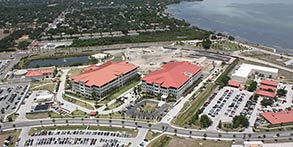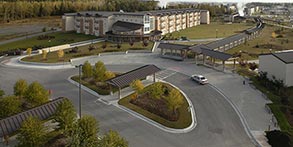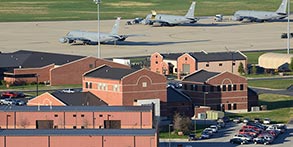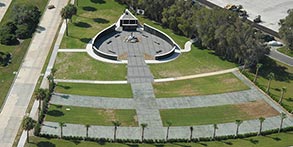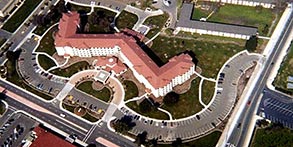Air Force Corporate Standards
Confirm the NEPA process is successfully complete prior to beginning the site design.
Utilize an integrated design approach to align on-site engineered systems with the natural environment. During design, conduct a site analysis of the associated climate including local and regional context and ensure the site accommodates a building’s optimum orientation, configuration and massing. When possible, preserve previously undisturbed/undeveloped areas of the site.
Conduct a life cycle cost analysis and diligently evaluate feasibility of Enhanced Use Leases, Energy Savings Performance Contracts and Public-Private Partnerships in developing sites to provide the greatest long-term benefit to the Air Force.
Sustainability
Work with the base community planner to select a site and gain appropriate approvals. Incorporate cost effective passive climate responsive design solutions to minimize life cycle costs. Assure Installation Facilities Standards (IFS) requirements for site features and systems and federal guidelines for water resources can be attained. Support alternative transportation and promote walkability and cycling.
Resilience
Address climate resilience in site design and minimize ongoing maintenance requirements. Follow DoD and AF criteria and define site related climate risk mitigation strategies in the IFS. Prioritize the use of passive systems in site solutions. In areas at high risk to tornadoes coordinate the location of engineered storm shelters for occupants with direct egress path from facilities.
UFC 1-200-02 High Performance and Sustainable Building Requirements https://www.wbdg.org/dod/ufc/ufc-1-200-02
UFC 2-100-01 Installation Master Planning https://www.wbdg.org/dod/ufc/ufc-2-100-01
UFC 3-101-01 Architecture https://www.wbdg.org/dod/ufc/ufc-3-101-01
AFI 32-7063, Air Installations Compatible Use Zones Program http://static.e-publishing.af.mil/production/1/af_a4/publication/afi32-7063/afi32-7063.pdf
